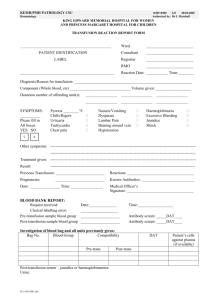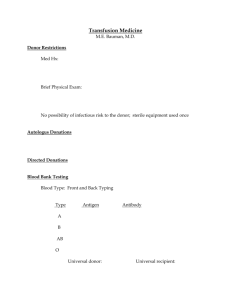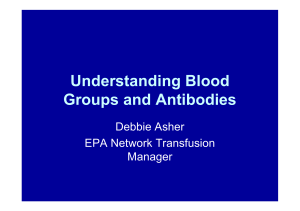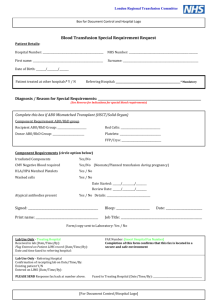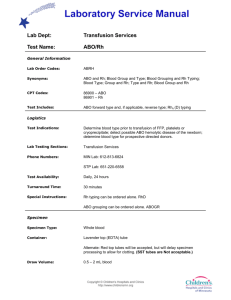i need to know about cross matching
advertisement
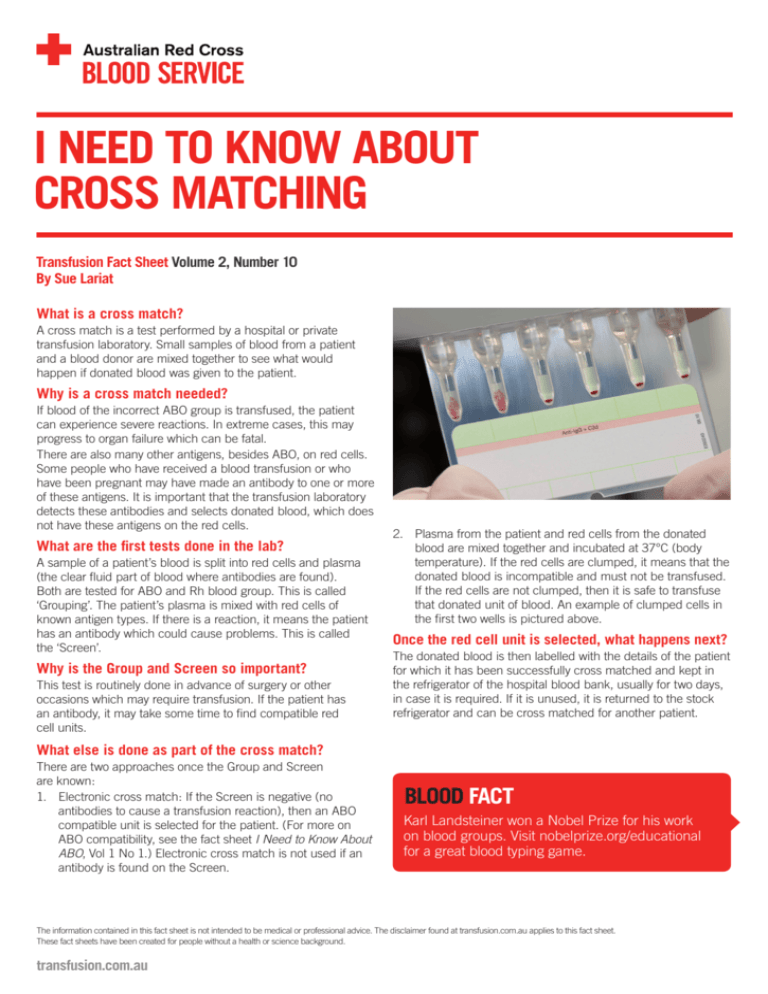
I NEED TO KNOW ABOUT CROSS MATCHING Transfusion Fact Sheet Volume 2, Number 10 By Sue Lariat What is a cross match? A cross match is a test performed by a hospital or private transfusion laboratory. Small samples of blood from a patient and a blood donor are mixed together to see what would happen if donated blood was given to the patient. Why is a cross match needed? If blood of the incorrect ABO group is transfused, the patient can experience severe reactions. In extreme cases, this may progress to organ failure which can be fatal. There are also many other antigens, besides ABO, on red cells. Some people who have received a blood transfusion or who have been pregnant may have made an antibody to one or more of these antigens. It is important that the transfusion laboratory detects these antibodies and selects donated blood, which does not have these antigens on the red cells. What are the first tests done in the lab? A sample of a patient’s blood is split into red cells and plasma (the clear fluid part of blood where antibodies are found). Both are tested for ABO and Rh blood group. This is called ‘Grouping’. The patient’s plasma is mixed with red cells of known antigen types. If there is a reaction, it means the patient has an antibody which could cause problems. This is called the ‘Screen’. Why is the Group and Screen so important? This test is routinely done in advance of surgery or other occasions which may require transfusion. If the patient has an antibody, it may take some time to find compatible red cell units. 2. Plasma from the patient and red cells from the donated blood are mixed together and incubated at 37°C (body temperature). If the red cells are clumped, it means that the donated blood is incompatible and must not be transfused. If the red cells are not clumped, then it is safe to transfuse that donated unit of blood. An example of clumped cells in the first two wells is pictured above. Once the red cell unit is selected, what happens next? The donated blood is then labelled with the details of the patient for which it has been successfully cross matched and kept in the refrigerator of the hospital blood bank, usually for two days, in case it is required. If it is unused, it is returned to the stock refrigerator and can be cross matched for another patient. What else is done as part of the cross match? There are two approaches once the Group and Screen are known: 1. Electronic cross match: If the Screen is negative (no antibodies to cause a transfusion reaction), then an ABO compatible unit is selected for the patient. (For more on ABO compatibility, see the fact sheet I Need to Know About ABO, Vol 1 No 1.) Electronic cross match is not used if an antibody is found on the Screen. BLOOD FACT Karl Landsteiner won a Nobel Prize for his work on blood groups. Visit nobelprize.org/educational for a great blood typing game. The information contained in this fact sheet is not intended to be medical or professional advice. The disclaimer found at transfusion.com.au applies to this fact sheet. These fact sheets have been created for people without a health or science background. transfusion.com.au




